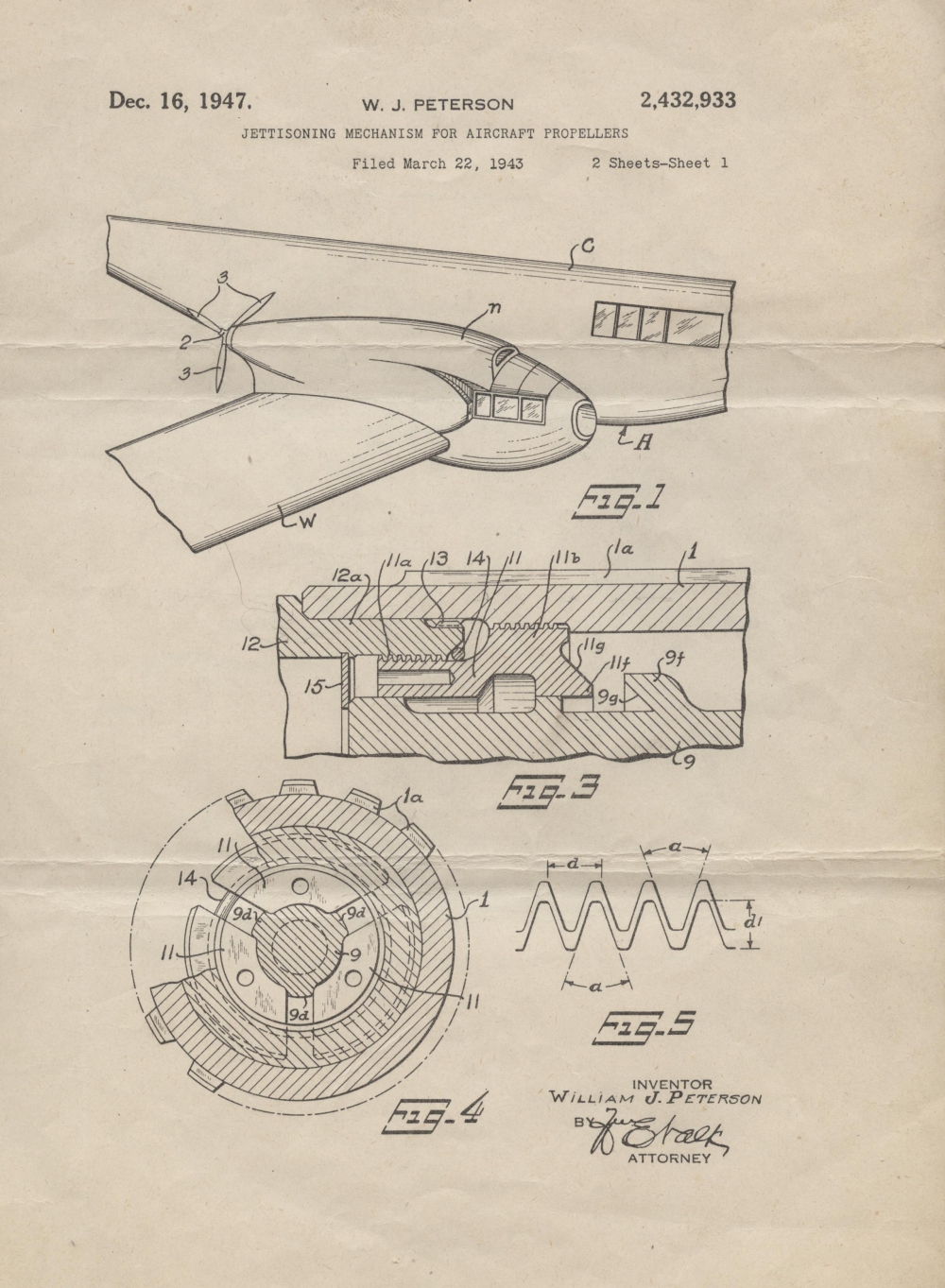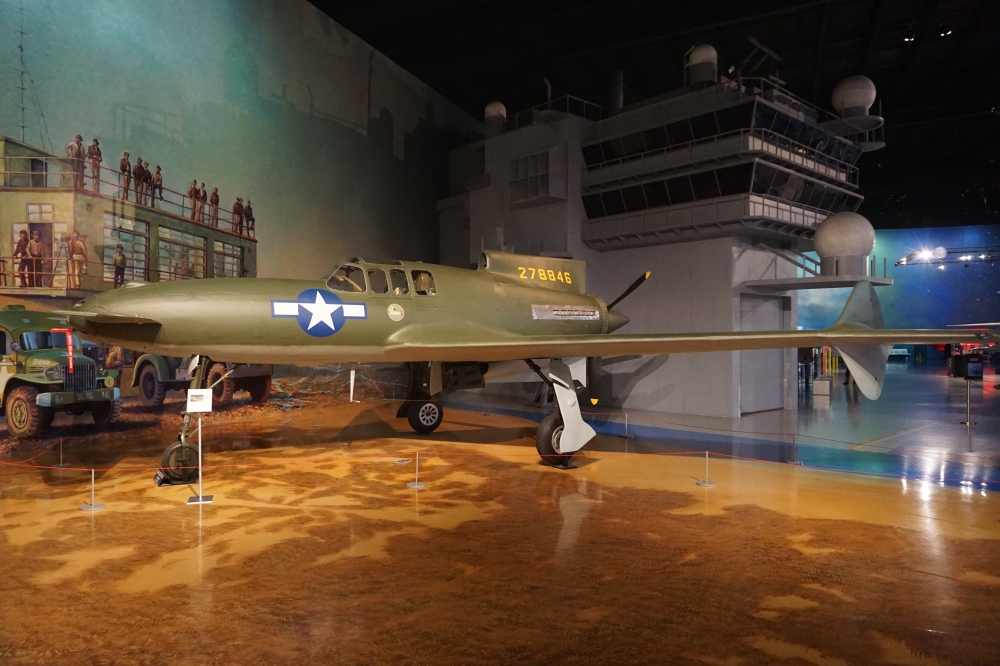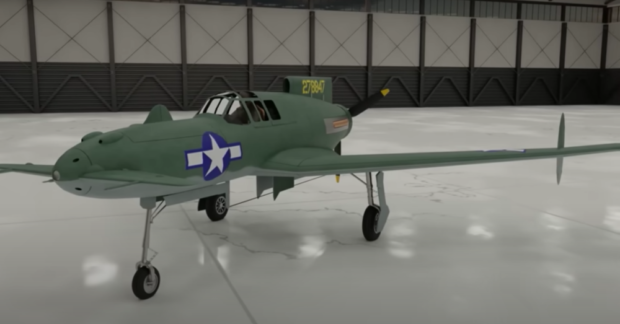The Curtiss-Wright XP-55 Ascender (company designation CW-24) is a 1940s United States prototype fighter aircraft built by Curtiss-Wright. Along with the Vultee XP-54 and Northrop XP-56, it resulted from United States Army Air Corps proposal R-40C issued on 27 November 1939 for aircraft with improved performance, armament, and pilot visibility over existing fighters; it specifically allowed for unconventional aircraft designs.
An unusual design for its time, it had a canard configuration, a rear-mounted engine, swept wings, and two vertical tails. Because of its pusher design, it was sarcastically referred to as the “Ass-ender”. Like the XP-54, the Ascender was designed for the Pratt & Whitney X-1800 engine, but was re-designed after that engine project was cancelled. It was also the first Curtiss fighter aircraft to use tricycle landing gear.
Design and development
June 1940, the Curtiss-Wright company received an Army contract for preliminary engineering data and a powered wind tunnel model. The designation P-55 was reserved for the project. The USAAC was dissatisfied with the results of these tests. Accordingly, Curtiss-Wright built a flying full-scale model they designated CW-24B. The flying testbed was powered by a 275 hp (205 kW) Menasco C68-5 inline engine. It had a fabric-covered, welded steel tube fuselage with a wooden wing. The undercarriage was non-retractable.
July 1942, the United States Army Air Forces issued a contract for three prototypes under the designation XP-55. Serial numbers were 42-78845 through 42-78847. During this time, the Pratt & Whitney X-1800 H-block sleeve valve engine was delayed, and was eventually canceled. Curtiss decided to switch to the 1,000 hp (750 kW) Allison V-1710 (F16) liquid-cooled inline engine because of its proven reliability. Armament was to be two 20 mm (0.79 in) cannon and two 0.50 in (12.7 mm) machine guns. During the mock-up phase, engineers switched to the 1,275 hp (951 kW) V-1710-95. The 20 mm cannons were also replaced by 0.50 in machine guns.
One feature of the XP-55 was a propeller jettison lever inside the cockpit to prevent the pilot from hitting the propeller during bailout. The jettison device was invented by W. Jerome Peterson while working as a design engineer for Curtiss-Wright.

The is the original patent for the Jettison device. W. Jerome Peterson was my father
Operational history
The first XP-55 (42-78845) was completed on 13 July 1943 with the same configuration as the final prototype CW-24B. The aircraft made its first flight on 19 July 1943 from the Army’s Scott Field near the Curtiss-Wright plant in St Louis, Missouri. The pilot was J. Harvey Gray, Curtiss’ test pilot. Testing revealed the takeoff run was excessively long. To solve this problem, the nose elevator size was increased and the aileron up-trim was interconnected with the flaps so it operated after the flaps were lowered.
November 1943, test pilot Harvey Gray, flying the first XP-55 (S/N 42-78845), was testing the aircraft’s stall performance at altitude. Suddenly, the XP-55 inverted into an uncontrolled descent. The pilot was unable to right the airplane, and it fell out of control for 16,000 ft (4,900 m) before Gray was able to parachute to safety. The aircraft was destroyed.
The second XP-55 (S/N 42-78846) was similar to the first, but with a slightly larger nose-elevator, modified elevator-tab systems, and a change from balance tabs to spring tabs on the ailerons. It flew for the first time on 9 January 1944. All flight tests were restricted so the stall-zone was avoided.
The third XP-55 (S/N 42-78847) flew for the first time on 25 April 1944. It was fitted with four machine guns, and incorporated some of the lessons from the loss of the first XP-55. Engineers discovered the aircraft’s stall characteristics could be improved by the addition of four-foot wingtip extensions, and by increasing the limits of the nose elevator travel. Between 16 September and 2 October 1944, the second XP-55 (42-78846), modified to the standards as the third aircraft, underwent official USAAF flight trials.
The performance of the XP-55 was inferior to conventional fighter aircraft. Sealing its fate, by 1944, jet-powered fighters were in development; that terminated development of the XP-55.

A Curtiss XP-55 Ascender on display at the Air Zoo at Kalamazoo/Battle Creek International Airport in Portage, Michigan – Michael Barera
The third prototype XP-55 (s/n 42-78847) was lost on 27 May 1945 during the closing day of the Seventh War Bond Air Show at the Army Air Forces Fair at Wright Field in Dayton, Ohio.[4] After a low pass in formation with a Lockheed P-38 Lightning and a North American P-51 Mustang on each wing, its pilot, William C. Glasgow, attempted a slow roll, but lost altitude and crashed, sending flaming debris into occupied civilian ground vehicles on a highway near the airfield. The crash killed Glasgow and four civilians on the ground.
Top Photo: Screenshot
Sources: Wikipedia; YouTube

